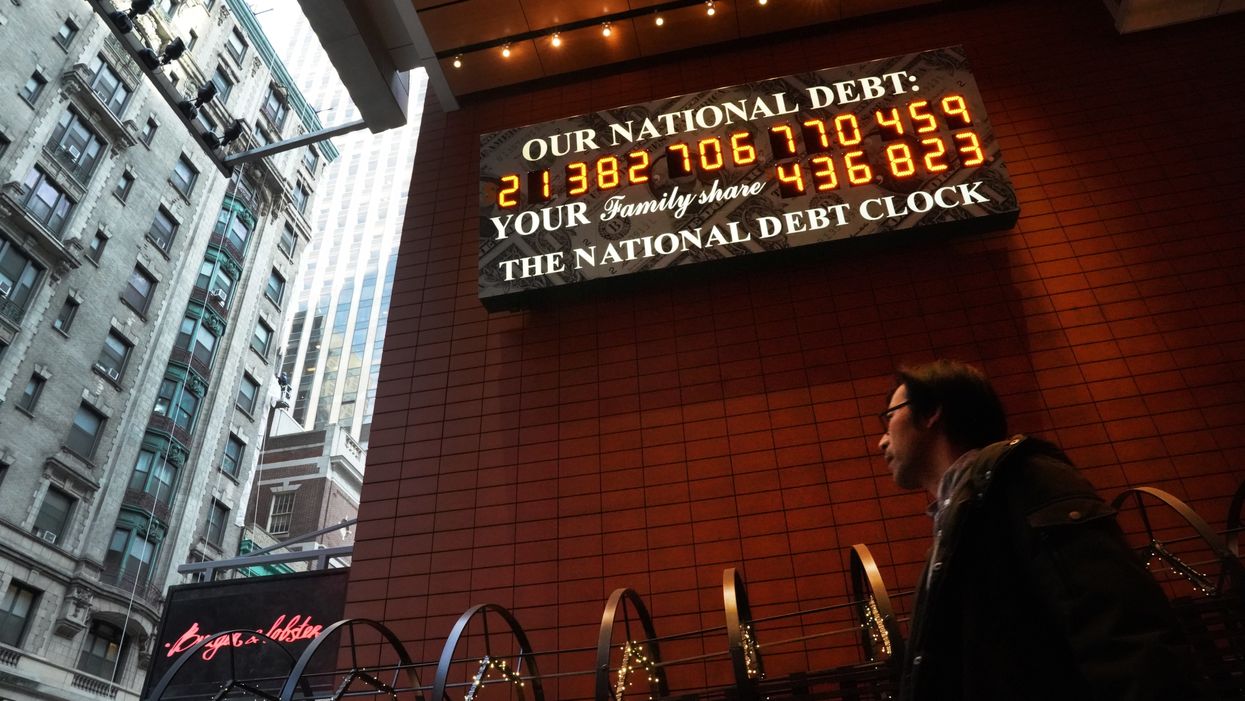
TIMOTHY A. CLARY/AFP/Getty Images

High deficit spending continues to drive up the national debt
The U.S. national debt has now reached 110 percent of the country's gross domestic product.
The federal deficit has been skyrocketing year over year during the Trump administration. According to data published by the White House's Office of Management and Budget, the federal deficit passed $1 trillion between 2009 and 2012 as the government employed anti-recession measures. By 2013 it had dropped to $678 billion, and then fell even further the following year to $484 billion. The last year that the federal government ran a surplus was in 2001.
OMB expects this deficit to pass the $1 trillion mark during this fiscal year and remain there until at least 2022.
The Congressional Budget Office has slightly more modest estimates, predicting in its August report that the deficit will hit $960 billion by the end of the 2019 fiscal year on Sept. 30, and then average "$1.2 trillion between 2020 and 2029."
Thanks to the deficit, the national debt has now reached 110 percent of the GDP.
According to CBS News, White House Correspondent Mark Knoller noted that this was the "Largest Debt to GDP ratio since 118.9% at the end of WWII," a number confirmed by the Congressional Research Service.
The national debt currently sits at $22.5 trillion. By the end of 2008, when former President Barack Obama was first elected, the national debt sat at $10 trillion. In 2016, it was $19.6 trillion.
The U.S. GDP for the second quarter of this fiscal year was revised down to a 2 percent increase, down from 3.1 percent the previous quarter.
In March 2016, then-candidate Donald Trump told the Washington Post that he would eliminate the entire national debt "over a period of eight years" (assuming a two-term presidency). He said that he would be able to do that by "renegotiating all of our [foreign trade] deals."
The following month he told Fortune that he could pay off "a percentage" of the debt, but that he would "rather not be so aggressive" in getting rid of it because "[w]e have to rebuild the infrastructure of our country." He stressed, though, that "[w]e have to reduce our debt."